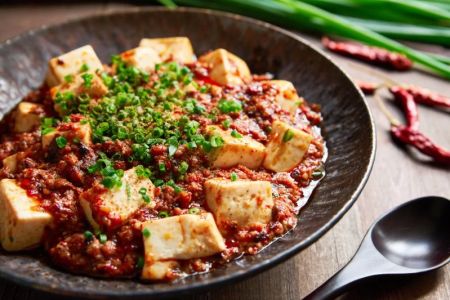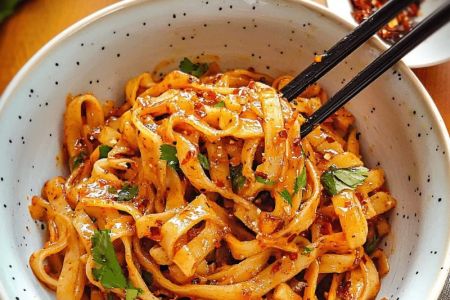- 2-Understanding-local-tastes-and-trends
- 3-Classic-dishes-with-a-modern-twist
- 6-Leveraging-Chinese-Food-for-business-growth
1. Chinese Restaurant Menu Ideas in the USA: Overview
Crafting a compelling Chinese restaurant menu in the USA requires more than just listing popular dishes; it demands a deep understanding of cultural fusion, local customer preferences, and culinary creativity. Many restaurateurs face the challenge of balancing authenticity with innovation to appeal to diverse American diners. In this article, we will explore detailed and practical Chinese restaurant menu ideas that resonate with American tastes while preserving the essence of traditional Chinese cuisine. Whether you're launching a new restaurant or refreshing an existing menu, these insights will help you stand out in the competitive US food market.
2. Understanding Local Tastes and Food Trends in the USA
2.1 Regional Preferences and Demographics
The USA’s vast geography means regional tastes can vary widely. For instance, coastal cities like San Francisco and New York tend to embrace adventurous and authentic Chinese dishes, including regional specialties such as Sichuan spicy dishes or Cantonese dim sum. Conversely, Midwestern cities often prefer milder flavors and familiar classics like General Tso’s Chicken and Egg Rolls. Conducting market research into your target area’s demographic makeup and dining habits is essential before finalizing your menu. This tailored approach enhances customer satisfaction and repeat business.
2.2 Current Food Trends Influencing Chinese Menus
In recent years, trends such as health-conscious eating, plant-based diets, and sustainability have penetrated the Chinese restaurant scene in the USA. Introducing dishes with fresh vegetables, lighter sauces, and vegan options not only broadens appeal but also showcases your restaurant’s adaptability. Consider incorporating gluten-free or low-sodium choices, which many American consumers actively seek. These adjustments demonstrate a proactive stance toward customer needs and set your restaurant apart from traditional menus.
3. Classic Dishes with a Modern Twist
3.1 Reinventing Staples
Traditional favorites like Kung Pao Chicken, Sweet and Sour Pork, and Hot and Sour Soup remain popular but can be refreshed through modern cooking techniques or ingredient swaps. For example, using organic chicken or artisanal sauces can elevate the dining experience. Adding unexpected ingredients, such as quinoa or heirloom vegetables, can intrigue health-conscious diners while maintaining familiar flavors. This approach bridges the gap between authenticity and innovation.
3.2 Story-Driven Menu Descriptions
Beyond the food itself, the way dishes are described on the menu plays a crucial role. Adding brief stories about the origin of a dish or the cultural significance of certain ingredients can captivate diners and enhance their connection to the food. For instance, describing how Mapo Tofu originates from Sichuan province’s spicy culinary heritage creates intrigue and adds depth to the dining experience.
4. Unique and Seasonal Menu Offerings to Engage Customers
4.1 Limited-Time Specials and Regional Highlights
Creating seasonal menus or limited-time specials featuring lesser-known Chinese dishes can draw curious diners and create buzz. Items like Dragon Well Tea-Smoked Duck or Mooncake during the Mid-Autumn Festival bring authenticity and exclusivity. Highlighting such offerings not only celebrates Chinese culture but also encourages customers to return to experience new flavors regularly.
4.2 Fusion and Cross-Cultural Creativity
Incorporating subtle fusion elements can be another way to attract a wider audience. Think of dishes like Chinese BBQ pork sliders or Kung Pao cauliflower tacos—creative blends that maintain Chinese flavors but fit into popular American eating styles. Fusion dishes can generate social media interest and appeal especially to younger demographics who enjoy novel dining experiences.
5. Storytelling Through Menu Design and Presentation
5.1 Visual and Descriptive Impact
The menu’s visual design should complement the culinary story you want to tell. Using culturally inspired graphics, warm color palettes, and clear sections for appetizers, mains, and specialties help customers navigate with ease. Including photos of signature dishes or chef recommendations can further encourage orders and reduce decision fatigue.
5.2 Building Brand Identity Through Menus
Your menu is often the first interaction customers have with your brand. Infusing it with your restaurant’s philosophy and unique selling points creates an emotional bond. For example, if your establishment emphasizes sustainability, highlight locally sourced ingredients or eco-friendly packaging. Such transparency fosters trust and encourages loyalty.
6. Leveraging Chinese Food and Menu Innovation for Business Growth
6.1 Customer Feedback and Menu Evolution
Successful restaurants continuously adapt based on customer feedback and emerging trends. Offering tasting events or survey incentives can provide valuable insights into which dishes resonate most. Iterative refinement of your menu not only optimizes sales but also shows customers that their opinions matter.
6.2 Where to Find the Best Resources and Products
For restaurateurs seeking high-quality ingredients, specialty products, or consultation on Chinese cuisine, visiting resources like Chinese Food provides an extensive range of suitable options. Whether you need authentic sauces, fresh produce, or expert advice, Chinese Food offers trusted solutions that can elevate your menu and streamline operations.
By combining an understanding of American dining preferences with authentic and innovative Chinese culinary elements, your restaurant can craft a menu that attracts and retains customers in today’s competitive market. Thoughtful menu design, ingredient selection, and cultural storytelling are key pillars to your restaurant’s success.







